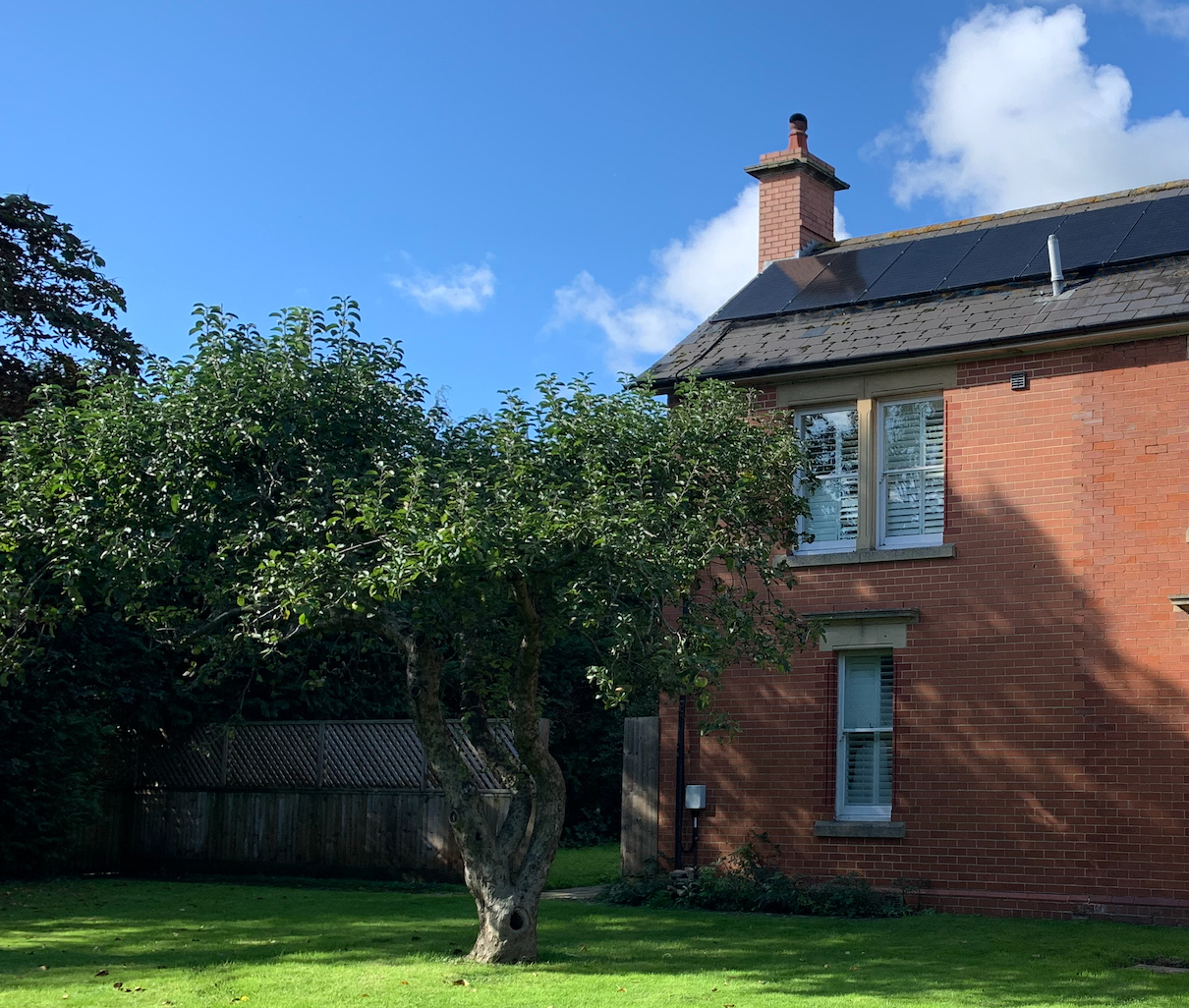| Winterstoke railway bridge, Weston super mare closed for two years. Posted by infoman at 06:14, 24th November 2025 |     |
being reported on local radio channels
| Re: Winterstoke railway bridge, Weston super mare closed for two years. Posted by bradshaw at 07:28, 24th November 2025 |     |
Report on BBC
https://www.bbc.co.uk/news/articles/cx23ln9klpzo
And on Somerset Council website
https://n-somerset.gov.uk/business/regeneration-development/winterstoke-road-replacement-bridge-scheme
| Re: Winterstoke railway bridge, Weston super mare closed for two years. Posted by grahame at 07:44, 24th November 2025 |     |
That's on the Weston avoider line, and is close to road vehicle traffic for two years. No closure to rail traffic announced though I would suspect that there will be some engineering works that mean trains can't go that way - divert through WSM station?
| Re: Winterstoke railway bridge, Weston super mare closed for two years. Posted by John D at 08:05, 24th November 2025 |     |
Quite unusual, built during world war 2, replacement being part funded by Ministry of Defence.
Does anyone know the history of this, I realise there was an airfield nearby, and some of the munitions / war components factories were near areas with lots of Boarding houses to house the workers. But no idea specifically on this.
| Re: Winterstoke railway bridge, Weston super mare closed for two years. Posted by Oxonhutch at 10:08, 24th November 2025 |     |
North Somerset Website
History of Winterstoke Road bridge
Winterstoke Road bridge was originally built between 1941 and 1943 by the War Office (now Ministry of Defence). It was built to provide easy access to the RAF’s aeroplane factory in Weston-super-Mare.
Access provided by the bridge was critical in supporting the war effort as the factory produced the Bristol Beaufighter aircraft.
The bridge was built by William Cowlin & Sons, with nearby railway sidings built by George Pollard & Co of Taunton using steel produced by Lysaght.
In the early 1950s the Ministry of Defence opened the bridge to the public, renaming the route Winterstoke Road.
In the intervening years Winterstoke Road has served as an important transport route in Weston-super-Mare.
Meanwhile, the aircraft industry continued in the local area for many years including sites for aircraft maintenance and Westland Helicopters on the site of the former RAF Weston-super-Mare.
In 2018, the age and condition of the bridge meant that a 7.5T weight restriction was put in place.
Now that the bridge is over 80 years old, it must be replaced if this important transport route in Weston-super-Mare is to remain open.
| Re: Winterstoke railway bridge, Weston super mare closed for two years. Posted by Phantom at 11:03, 24th November 2025 |     |
It's not that far from where I live and the roads are already much busier just from the temporary traffic lights that have been in place for the past couple of weeks
It is not far from WSM FC (old Westlands property) but for anyone coming into Weston there is a new link road into that area (on the old airfield), it is really those coming from town heading out to that area that will impacted.
It does amaze me how long it is taking to complete
| Re: Winterstoke railway bridge, Weston super mare closed for two years. Posted by Mark A at 12:40, 24th November 2025 |     |
Replacement bridge requires piling to 35 metres depth.
Mark
| Re: Winterstoke railway bridge, Weston super mare closed for two years. Posted by John D at 15:33, 24th November 2025 |     |
Replacement bridge requires piling to 35 metres depth.
Mark
Mark
35m is 115 feet, that is very long.
Normal size piling rigs would not be able to handle augers or insert the steel (either sheet or rebar cage) of that length. Sounds like specialist equipment will be needed
| Re: Winterstoke railway bridge, Weston super mare closed for two years. Posted by ChrisB at 15:57, 24th November 2025 |     |
40m piling being used for the Oxford Botley Road bridge.
| Re: Winterstoke railway bridge, Weston super mare closed for two years. Posted by bobm at 16:07, 24th November 2025 |     |
40m piling being used for the Oxford Botley Road bridge.
….and we all know how long that’s taking.
| Re: Winterstoke railway bridge, Weston super mare closed for two years. Posted by ChrisB at 16:11, 24th November 2025 |     |
On time since they commenced that piling.
It was shifting the underground utilities that over ran.....
| Re: Winterstoke railway bridge, Weston super mare closed for two years. Posted by bobm at 16:30, 24th November 2025 |     |
That’s of little comfort to those people who are still having to traipse along the road from the temporary bus terminus at Osney Island.
| Re: Winterstoke railway bridge, Weston super mare closed for two years. Posted by infoman at 04:39, 25th November 2025 |     |
Trying to put that 115 feet in to perspective.
So if we say the height of ceilings in a terraced house is eight feet
so if we take into account a two story house that's 24 feet.
That would be mean FIVE terraced house's on top of one another,
that's quite some distance to pile down.
| Re: Winterstoke railway bridge, Weston super mare closed for two years. Posted by grahame at 08:22, 25th November 2025 |     |
Trying to put that 115 feet in to perspective.
So if we say the height of ceilings in a terraced house is eight feet
so if we take into account a two story house that's 24 feet.
That would be mean FIVE terraced house's on top of one another,
that's quite some distance to pile down.
So if we say the height of ceilings in a terraced house is eight feet
so if we take into account a two story house that's 24 feet.
That would be mean FIVE terraced house's on top of one another,
that's quite some distance to pile down.
An IET carriage is 26 metres long and we are talking 35 metres (115 feet) of piling - so that's a carriage and a third.
| Re: Winterstoke railway bridge, Weston super mare closed for two years. Posted by Red Squirrel at 09:08, 25th November 2025 |     |
Trying to put that 115 feet in to perspective.
So if we say the height of ceilings in a terraced house is eight feet
so if we take into account a two story house that's 24 feet.
That would be mean FIVE terraced house's on top of one another,
that's quite some distance to pile down.
So if we say the height of ceilings in a terraced house is eight feet
so if we take into account a two story house that's 24 feet.
That would be mean FIVE terraced house's on top of one another,
that's quite some distance to pile down.
An IET carriage is 26 metres long and we are talking 35 metres (115 feet) of piling - so that's a carriage and a third.
Until someone can tell me how these distances compare with the size of Wales I will have no idea what you are all talking about

| Re: Winterstoke railway bridge, Weston super mare closed for two years. Posted by Mark A at 09:57, 25th November 2025 |     |
Until someone can tell me how these distances compare with the size of Wales I will have no idea what you are all talking about 

Well a blue whale's length can be typlcally about thirty metres so, no, hang on... ah...
Mark
| Re: Winterstoke railway bridge, Weston super mare closed for two years. Posted by Witham Bobby at 10:27, 25th November 2025 |     |
Aren't the recognised standard units for this kind of measurement "Double Decker Buses" and "Olympic Sized Swimming Pools"?
| Re: Winterstoke railway bridge, Weston super mare closed for two years. Posted by Chris from Nailsea at 20:11, 25th November 2025 |     |
So if we say the height of ceilings in a terraced house is eight feet
so if we take into account a two story house that's 24 feet.
Eh? How could you have possibly have worked that one out - even allowing for primary school arithmetic?

| Re: Winterstoke railway bridge, Weston super mare closed for two years. Posted by grahame at 21:21, 25th November 2025 |     |
So if we say the height of ceilings in a terraced house is eight feet
so if we take into account a two story house that's 24 feet.
Eh? How could you have possibly have worked that one out - even allowing for primary school arithmetic?

I looked at that one before I put up my earlier answer. A two storey house typically has a loft and comes in around 25 feet tall including the pitch of the room, on which the total height is very dependent. Here is a typical example

| Re: Winterstoke railway bridge, Weston super mare closed for two years. Posted by ellendune at 10:53, 26th November 2025 |     |
Found this on Facebook post by Cllr Mike Bell
WHY DOES WINTERSTOKE BRIDGE REPLACEMENT TAKE 18 MONTHS❓
Why is the Winterstoke Bridge Replacement Scheme going to take approx 18 months? Here’s the full detailed answer from the contractor courtesy of my colleague Cllr Ciarán Cronnelly - Weston super Mare.
Matt Whale, Octavius:
"The biggest engineering challenge on the Winterstoke Road Bridge is the ground conditions, with Weston-super-Mare being situated on the alluvium of the Somerset Levels, this fenland is the second largest in England and is characterised by low-lying land prone to flooding, the alluvium is deep, extremely soft, and unstable in nature. The poor ground conditions are the main reason the existing structure has failed albeit it was only ever supposed to be a temporary structure and it was never designed to carry modern traffic flows or weights.
The ground conditions are also a major reason (the main reason) why we cannot install a new bridge by lifting it in as a complete unit, nor by constructing it off-line and sliding it into position using SPMTs. Much of the new bridge structure sits below ground level and must be supported on 24 no. 1.2m diameter steel-cased bored concrete piles, each drilled to a depth of 35m to reach stable Mercia Mudstone.
With a 60m span and a weight of over 2000 tonnes, a bridge of this scale would simply sink without piling, and so would any heavy lifting or sliding equipment required to install it. Prefabrication and sliding options are therefore ruled out.
Even if the bridge could be built off-line, we would still need to install the piled substructure first and the ground conditions dictate that this is a slow and highly controlled process. The piles are so large, and the soil so challenging, that we are using the smallest rig capable of achieving both the required depth and diameter, meaning progress is limited to approximately one pile every other day, all being carried out in a small area adjacent to a live railway line.
The work above takes considerable time, and we have many other challenges to factor in as well:
1) Spatial constraints and proximity to businesses and properties – when the original bridge was built it was surrounded by fields, rhynes and a flak tower and not the built-up area you see today.
2) A large drainage culvert and water course (Rhyne) underneath the existing bridge – A high water table adds to the difficult ground condition challenges and must be carefully managed.
3) The 100mph Bristol to Exeter Mainline to which the project team or NSC don’t have any control over - Work over the railway line can only be carried out when there are no passenger and freight trains running and these types of closures usually must be booked months, sometimes years in advance, and the operational window is small.
If Network Rail and Train Operators did agree to diversions or daytime closures the project would be expected to pay out £millions due to compensation payments to cover the Train Operator Companies (TOCs) and the Feight Operator Companies (FOCs) loss of income, as well as passenger compensation for delays potentially all the way up to London and beyond.
Delays on this section of mainline can affect the rolling stock all over the country causing further delay and compensation, Trains are unable to be diverted around Weston-super-Mare due to this being the Bristol to Exeter Mainline and having two tracks, the loop line into Weston is a single bi-directional line.
The railway track itself below the bridge is also susceptible to the poor ground conditions with heave or ‘lifting’ expected once the old bridge is removed, this must be carefully managed as the slightest twist or fault in track alignment can potentially derail a train travelling at 100mph.
We are also very mindful to keep the community connected with a temporary footbridge which also serves a secondary purpose to ensure uninterrupted service supplies when the old bridge is removed with BT, City Fibre, gas and watermains currently crossing it, supplying businesses and hundreds of private properties.
This is a significant engineering challenge, and the design also must consider the poor ground conditions, pedestrians, trains, and utilities.
No records of the existing bridge exist (not surprising being built by the MOD during the war) and partial demolition of the bridge while keeping a section open to traffic is not feasible, as the bridge is too small and the construction techniques used in 1941 do not allow for this approach.
When you consider the all of the above we have significant limits on what we can do, the plant and equipment we can use and the timeframes we do it in, Octavius and our specialist supply chain have the capability and expertise to carry out rapid infrastructure replacement using complex offline techniques and I have been fortunate enough to deliver a number of them, but sadly this scheme is not suited to those techniques due to the challenges I have mentioned above, you would be hard pushed to find anyone globally that could undertake this particular scheme any differently."
Why is the Winterstoke Bridge Replacement Scheme going to take approx 18 months? Here’s the full detailed answer from the contractor courtesy of my colleague Cllr Ciarán Cronnelly - Weston super Mare.
Matt Whale, Octavius:
"The biggest engineering challenge on the Winterstoke Road Bridge is the ground conditions, with Weston-super-Mare being situated on the alluvium of the Somerset Levels, this fenland is the second largest in England and is characterised by low-lying land prone to flooding, the alluvium is deep, extremely soft, and unstable in nature. The poor ground conditions are the main reason the existing structure has failed albeit it was only ever supposed to be a temporary structure and it was never designed to carry modern traffic flows or weights.
The ground conditions are also a major reason (the main reason) why we cannot install a new bridge by lifting it in as a complete unit, nor by constructing it off-line and sliding it into position using SPMTs. Much of the new bridge structure sits below ground level and must be supported on 24 no. 1.2m diameter steel-cased bored concrete piles, each drilled to a depth of 35m to reach stable Mercia Mudstone.
With a 60m span and a weight of over 2000 tonnes, a bridge of this scale would simply sink without piling, and so would any heavy lifting or sliding equipment required to install it. Prefabrication and sliding options are therefore ruled out.
Even if the bridge could be built off-line, we would still need to install the piled substructure first and the ground conditions dictate that this is a slow and highly controlled process. The piles are so large, and the soil so challenging, that we are using the smallest rig capable of achieving both the required depth and diameter, meaning progress is limited to approximately one pile every other day, all being carried out in a small area adjacent to a live railway line.
The work above takes considerable time, and we have many other challenges to factor in as well:
1) Spatial constraints and proximity to businesses and properties – when the original bridge was built it was surrounded by fields, rhynes and a flak tower and not the built-up area you see today.
2) A large drainage culvert and water course (Rhyne) underneath the existing bridge – A high water table adds to the difficult ground condition challenges and must be carefully managed.
3) The 100mph Bristol to Exeter Mainline to which the project team or NSC don’t have any control over - Work over the railway line can only be carried out when there are no passenger and freight trains running and these types of closures usually must be booked months, sometimes years in advance, and the operational window is small.
If Network Rail and Train Operators did agree to diversions or daytime closures the project would be expected to pay out £millions due to compensation payments to cover the Train Operator Companies (TOCs) and the Feight Operator Companies (FOCs) loss of income, as well as passenger compensation for delays potentially all the way up to London and beyond.
Delays on this section of mainline can affect the rolling stock all over the country causing further delay and compensation, Trains are unable to be diverted around Weston-super-Mare due to this being the Bristol to Exeter Mainline and having two tracks, the loop line into Weston is a single bi-directional line.
The railway track itself below the bridge is also susceptible to the poor ground conditions with heave or ‘lifting’ expected once the old bridge is removed, this must be carefully managed as the slightest twist or fault in track alignment can potentially derail a train travelling at 100mph.
We are also very mindful to keep the community connected with a temporary footbridge which also serves a secondary purpose to ensure uninterrupted service supplies when the old bridge is removed with BT, City Fibre, gas and watermains currently crossing it, supplying businesses and hundreds of private properties.
This is a significant engineering challenge, and the design also must consider the poor ground conditions, pedestrians, trains, and utilities.
No records of the existing bridge exist (not surprising being built by the MOD during the war) and partial demolition of the bridge while keeping a section open to traffic is not feasible, as the bridge is too small and the construction techniques used in 1941 do not allow for this approach.
When you consider the all of the above we have significant limits on what we can do, the plant and equipment we can use and the timeframes we do it in, Octavius and our specialist supply chain have the capability and expertise to carry out rapid infrastructure replacement using complex offline techniques and I have been fortunate enough to deliver a number of them, but sadly this scheme is not suited to those techniques due to the challenges I have mentioned above, you would be hard pushed to find anyone globally that could undertake this particular scheme any differently."










